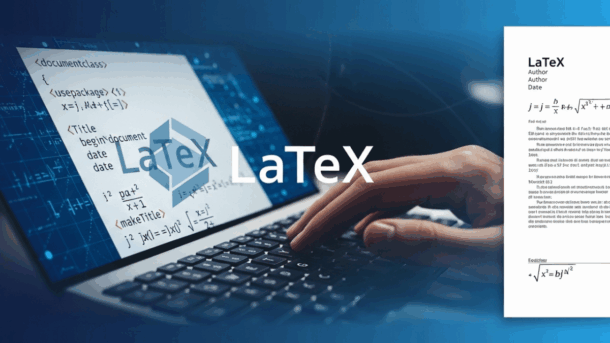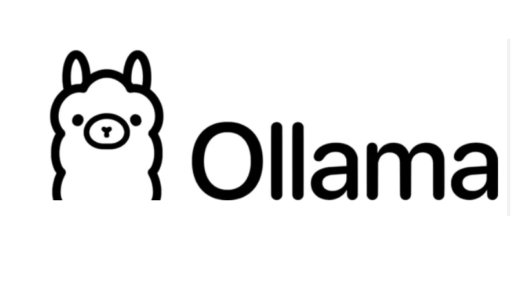A streamlined guide to setting up LaTeX on Ubuntu ARM servers and using it with VS Code
What is LaTeX?
LaTeX (pronounced “LAH-tech” or “LAY-tech”) is a high-quality typesetting system designed for the production of technical and scientific documents. Unlike traditional word processors like Microsoft Word, LaTeX uses a markup language approach where you write plain text with formatting commands, and the system compiles it into beautifully formatted PDFs.
Why Use LaTeX?
- Professional Typography: Produces publication-quality documents with superior typography
- Mathematical Expressions: Unmatched support for complex mathematical formulas and equations
- Consistent Formatting: Automatic handling of numbering, cross-references, and citations
- Version Control Friendly: Plain text files work perfectly with Git and other version control systems
- Academic Standard: Widely used in academia, research, and scientific publishing
- Separation of Content and Style: Focus on writing while LaTeX handles the formatting
LaTeX vs. Overleaf
While Overleaf is a popular online LaTeX editor, setting up LaTeX locally with VS Code offers several advantages:
- Offline Access: Work without internet connection
- Better Performance: No upload/download delays
- Full Control: Complete customization of your environment
- Integration: Seamless integration with your existing development workflow
- Privacy: Keep sensitive documents on your local machine
- Cost: Free alternative to Overleaf’s premium plans
Table of Contents
- What is LaTeX?
- Quick Installation
- VS Code Configuration
- Recommended Project Structure
- LaTeX Command Cheat Sheet
- Emoji Support
- Essential Keyboard Shortcuts
- Common Issues & Solutions
- Changing Fonts
- Quick Test Document
- Useful Resources
Quick Installation
Prerequisites
# Verify requirements df -h /usr/local # Need 5GB+ free space sudo -v # Confirm sudo access code --version # Verify VS Code installed
Installation (10 minutes)
# 1. Update and install LaTeX sudo apt update sudo apt install texlive-full # 2. Install fonts for emoji and symbols sudo apt install fonts-noto-color-emoji fonts-noto fonts-dejavu fonts-liberation # 3. Refresh font cache fc-cache -fv # 4. Verify installation pdflatex --version lualatex --version fc-list | grep -i emoji
Install VS Code Extension
# In VS Code Quick Open (Ctrl+P): ext install James-Yu.latex-workshop
VS Code Configuration
Create .vscode/settings.json in your project root:
{
// === Build Configuration ===
"latex-workshop.latex.autoBuild.run": "onSave",
"latex-workshop.latex.outDir": "./build",
"latex-workshop.latex.autoClean.run": "onBuilt",
// === CRITICAL: Force custom recipes ===
"latex-workshop.latex.recipe.default": "lastUsed",
"latex-workshop.latex.recipes": [
{
"name": "latexmk (lualatex)",
"tools": ["lualatexmk"]
},
{
"name": "latexmk (pdflatex)",
"tools": ["pdflatexmk"]
},
{
"name": "pdflatex ➞ bibtex ➞ pdflatex × 2",
"tools": ["pdflatex", "bibtex", "pdflatex", "pdflatex"]
}
],
"latex-workshop.latex.tools": [
{
"name": "lualatexmk",
"command": "latexmk",
"args": [
"-synctex=1",
"-interaction=nonstopmode",
"-file-line-error",
"-lualatex",
"-output-directory=%OUTDIR%",
"%DOC%"
]
},
{
"name": "pdflatexmk",
"command": "latexmk",
"args": [
"-synctex=1",
"-interaction=nonstopmode",
"-file-line-error",
"-pdf",
"-output-directory=%OUTDIR%",
"%DOC%"
]
},
{
"name": "pdflatex",
"command": "pdflatex",
"args": [
"-synctex=1",
"-interaction=nonstopmode",
"-file-line-error",
"-output-directory=%OUTDIR%",
"%DOC%"
]
},
{
"name": "bibtex",
"command": "bibtex",
"args": ["%DOCFILE%"]
}
],
// === CRITICAL FIX: Prevent files in root ===
"latex-workshop.latex.build.forceRecipeUsage": true,
// === PDF Viewer ===
"latex-workshop.view.pdf.viewer": "tab",
// === Formatting ===
"latex-workshop.formatting.latex": "latexindent",
"latex-workshop.linting.chktex.enabled": true,
// === IntelliSense ===
"latex-workshop.intellisense.package.enabled": true,
"latex-workshop.intellisense.citation.backend": "bibtex"
}
Critical Setting: "latex-workshop.latex.build.forceRecipeUsage": true ensures auxiliary files go to build/ directory.
Recommended Project Structure
my-latex-project/
├── .vscode/
│ └── settings.json # VS Code configuration
├── .gitignore # Exclude build files
├── main.tex # Main document
├── references.bib # Bibliography
├── sections/ # Document sections
│ ├── introduction.tex
│ ├── methodology.tex
│ └── conclusion.tex
├── figures/ # Images and figures
│ └── diagram.pdf
└── build/ # Auto-generated files (ignored by git)
├── main.pdf
├── main.aux
└── main.log
.gitignore
# Build directory build/ # LaTeX auxiliary files (if any escape to root) *.aux *.log *.out *.toc *.lof *.lot *.fls *.fdb_latexmk *.synctex.gz *.bbl *.blg *.bcf *.run.xml *.nav *.snm *.vrb # Editor files .vscode/ *.swp *~
Basic Document Template
% main.tex
\documentclass[12pt,a4paper]{article}
% Essential packages
\usepackage[utf8]{inputenc}
\usepackage[margin=1in]{geometry}
\usepackage{graphicx}
\usepackage{amsmath}
\usepackage{hyperref}
% Document information
\title{Your Document Title}
\author{Your Name}
\date{\today}
\begin{document}
\maketitle
\section{Introduction}
Your content here.
\end{document}
Two-Column Layout Template
% two_column.tex
\documentclass[12pt, twocolumn]{article}
% Essential packages
\usepackage[margin=1in]{geometry}
\usepackage{amsmath, amssymb, amsthm}
\usepackage{graphicx}
\usepackage{wrapfig} % Wrap text around figures
\usepackage{parskip} % Better paragraph spacing
\usepackage{xcolor} % Colors
\usepackage{tikz} % Graphics and diagrams
\title{Two-Column Document}
\author{Your Name}
\date{\today}
\begin{document}
\maketitle
\section{Introduction}
This document uses a two-column layout, common in academic papers and journals. The text flows naturally between columns.
\subsection{Colored Text}
You can add \textcolor{blue}{colored text} or \textcolor{red}{highlight important} information easily.
\section{Figures in Two Columns}
% Figure spanning one column
\begin{figure}[htbp]
\centering
\includegraphics[width=0.9\linewidth]{image.pdf}
\caption{Single column figure}
\label{fig:single}
\end{figure}
% Figure spanning both columns
\begin{figure*}[htbp]
\centering
\includegraphics[width=0.8\textwidth]{wide-image.pdf}
\caption{Full-width figure spanning both columns}
\label{fig:wide}
\end{figure*}
\section{TikZ Example}
\begin{tikzpicture}
\draw[thick,->] (0,0) -- (2,0) node[right] {$x$};
\draw[thick,->] (0,0) -- (0,2) node[above] {$y$};
\draw[blue,thick] (0,0) circle (1cm);
\fill[red] (0,0) circle (2pt);
\end{tikzpicture}
\end{document}
LaTeX Command Cheat Sheet
Document Structure
\documentclass{article} % article, book, report, beamer
\usepackage{packagename} % Include package
\title{Title} \author{Name} \date{\today}
\maketitle % Generate title
\section{Section} % Numbered section
\section*{Unnumbered Section} % Unnumbered
\subsection{Subsection}
\subsubsection{Subsubsection}
Text Formatting
\textbf{Bold} \textit{Italic} \underline{Underline}
\texttt{Monospace} \emph{Emphasis}
% Font sizes
\tiny \small \normalsize \large \Large \LARGE \huge \Huge
Lists
% Unordered
\begin{itemize}
\item First
\item Second
\end{itemize}
% Ordered
\begin{enumerate}
\item First
\item Second
\end{enumerate}
% Description
\begin{description}
\item[Term] Definition
\end{description}
Mathematics
% Inline math
$E = mc^2$
% Display math
\[ E = mc^2 \]
% Numbered equation
\begin{equation}
E = mc^2
\end{equation}
% Common symbols
\alpha \beta \gamma \sum \int \frac{a}{b} \sqrt{x}
x^2 x_i \leq \geq \neq \approx \infty
Figures
\begin{figure}[htbp]
\centering
\includegraphics[width=0.8\textwidth]{figures/image.pdf}
\caption{Figure caption}
\label{fig:label}
\end{figure}
% Reference: See Figure~\ref{fig:label}
Tables
\begin{table}[htbp]
\centering
\begin{tabular}{|l|c|r|}
\hline
Left & Center & Right \\
\hline
Data & Data & Data \\
\hline
\end{tabular}
\caption{Table caption}
\label{tab:label}
\end{table}
Code Listings
% Inline code
Use \texttt{print("Hello")} for output.
% Basic code block
\begin{verbatim}
def hello():
print("Hello, World!")
\end{verbatim}
% Advanced with listings package
\usepackage{listings}
\usepackage{xcolor}
% Configure style
\lstset{
language=Python,
basicstyle=\ttfamily\small,
keywordstyle=\color{blue},
commentstyle=\color{gray},
stringstyle=\color{red},
numbers=left,
numberstyle=\tiny\color{gray},
stepnumber=1,
frame=single,
breaklines=true,
showstringspaces=false
}
% Use in document
\begin{lstlisting}
def fibonacci(n):
"""Calculate Fibonacci number"""
if n <= 1:
return n
return fibonacci(n-1) + fibonacci(n-2)
# Test function
print(fibonacci(10))
\end{lstlisting}
% Import from file
\lstinputlisting[language=Python]{code/script.py}
% Inline code with syntax highlighting
\lstinline{x = [1, 2, 3]}
Citations & References
% In text
\cite{key} \cite{key1,key2}
% Bibliography
\bibliographystyle{plain}
\bibliography{references}
% In references.bib:
@article{key,
author = {Author Name},
title = {Article Title},
journal = {Journal},
year = {2025}
}
Essential Packages
% Page layout
\usepackage[margin=1in]{geometry}
% Graphics
\usepackage{graphicx}
\usepackage{wrapfig} % Wrap text around figures
% Math
\usepackage{amsmath,amssymb,amsthm}
% Colors
\usepackage{xcolor}
% Typography
\usepackage{parskip} % Better paragraph spacing
% Hyperlinks
\usepackage{hyperref}
% Code listings
\usepackage{listings}
% Multiple columns
\usepackage{multicol}
% Graphics and diagrams
\usepackage{tikz} % Create diagrams and graphics
Emoji Support
Setup for Emoji
Use LuaLaTeX engine (specify in VS Code or with magic comment):
% !TEX program = lualatex
\documentclass{article}
\usepackage{fontspec}
\newfontfamily\emojifont{Noto Color Emoji}[Renderer=HarfBuzz]
\newcommand{\emoji}[1]{{\emojifont #1}}
\begin{document}
Regular text with emoji: \emoji{😀 💖 🎉 ✅ 🚀}
Math and emoji: The result is correct \emoji{✅} and $E=mc^2$
\end{document}
Multi-File Projects with Emoji
In main.tex:
% !TEX program = lualatex
\documentclass{article}
\usepackage{fontspec}
\newfontfamily\emojifont{Noto Color Emoji}[Renderer=HarfBuzz]
\newcommand{\emoji}[1]{{\emojifont #1}}
\begin{document}
\input{sections/introduction}
\end{document}
In sections/introduction.tex:
\section{Introduction}
Use emoji directly: \emoji{🌟}
Common Emoji Categories
% Status & Feedback
\emoji{✅ ❌ ⚠️ ℹ️ ✓}
% Math & Science
\emoji{🔬 🧪 📊 📈 💡}
% Actions
\emoji{🎯 🚀 ⚡ 🔥 💪}
% Academic
\emoji{📚 📖 ✏️ 🎓 📝}
Essential Keyboard Shortcuts
| Action | Shortcut | Description |
|---|---|---|
| Build Document | Ctrl+Alt+B | Compile LaTeX file |
| View PDF | Ctrl+Alt+V | Open PDF preview |
| Build & View | Ctrl+Alt+J | Compile and show PDF |
| Clean Files | Ctrl+Alt+C | Remove auxiliary files |
| Kill Process | Ctrl+Alt+K | Stop compilation |
| SyncTeX Forward | Ctrl+Alt+J | Jump from source to PDF |
| SyncTeX Backward | Ctrl+Click in PDF | Jump from PDF to source |
Common Issues & Solutions
1. Auxiliary Files in Root Directory
Problem: Files appear in project root instead of build/ folder.
Solution:
// Add to .vscode/settings.json "latex-workshop.latex.build.forceRecipeUsage": true
Then clean and rebuild:
rm *.aux *.log *.pdf *.synctex.gz 2>/dev/null # Reload VS Code (Ctrl+Shift+P → "Reload Window")
2. Emojis Not Rendering
Checklist:
- ✅ Using LuaLaTeX? Add
% !TEX program = lualatexat top - ✅ Fonts installed? Run
fc-list | grep -i emoji - ✅ Proper setup? Include fontspec and HarfBuzz renderer
- ✅ Using
\emoji{}command for all emojis?
Quick fix:
sudo apt install fonts-noto-color-emoji fc-cache -fv
3. Build Fails with “Package not found”
Solution:
# Install missing package sudo apt install texlive-<package-name> # Or install everything sudo apt install texlive-full
4. PDF Not Updating
Solutions:
- Save file again (
Ctrl+S) - Manual build (
Ctrl+Alt+B) - Kill and rebuild (
Ctrl+Alt+K, thenCtrl+Alt+B) - Close PDF viewer and reopen
- Reload VS Code window
5. SyncTeX Not Working
Fix: Ensure -synctex=1 is in build args (already in config above)
6. Bibliography Not Appearing
Solution: Build sequence matters
# Run in order: pdflatex main.tex # First pass bibtex main # Process bibliography pdflatex main.tex # Second pass (add citations) pdflatex main.tex # Third pass (resolve references)
Or use recipe: “pdflatex ➞ bibtex ➞ pdflatex × 2”
7. Permission Denied Error
Solution:
# Check permissions ls -la build/ # Fix if needed chmod -R u+w build/
8. Font Cache Issues
Solution:
fc-cache -fv sudo fc-cache -fv # If above doesn't work
9. Memory Issues (Large Documents)
Solutions:
- Use
\include{}instead of\input{}for chapters - Compile individual chapters during editing
- Increase LaTeX memory in
texmf.cnf(advanced)
10. Unicode/Special Characters Not Working
Solution: Use XeLaTeX or LuaLaTeX instead of pdfLaTeX:
% !TEX program = lualatex % or xelatex
\usepackage{fontspec}
Changing Fonts
Using Sans Serif Fonts (Arial, Roboto, etc.)
With LuaLaTeX or XeLaTeX, you can use any system font:
% !TEX program = lualatex
\documentclass{article}
\usepackage{fontspec}
% Set main font to sans serif
\setmainfont{Arial} % or Roboto, Helvetica, etc.
% Alternative: Use system fonts
% \setmainfont{Liberation Sans} % Open-source Arial alternative
% \setmainfont{Roboto} % Modern sans serif
% Or just switch to Computer Modern Sans
\renewcommand{\familydefault}{\sfdefault}
\begin{document}
This text will be in Arial (or your chosen font).
\end{document}
With pdfLaTeX (limited options)
\documentclass{article}
\usepackage[utf8]{inputenc}
\renewcommand{\familydefault}{\sfdefault} % Use sans serif
\usepackage{helvet} % Helvetica-like font
\begin{document}
Sans serif document with pdfLaTeX.
\end{document}
Check Available Fonts
# List all installed fonts fc-list : family | sort | uniq # Search for specific font fc-list | grep -i arial fc-list | grep -i roboto
Quick Test Document
Create test.tex to verify everything works:
% !TEX program = lualatex
\documentclass{article}
\usepackage{fontspec}
\usepackage{amsmath}
\usepackage{listings}
\usepackage{xcolor}
% Set custom fonts
\setmainfont{Liberation Sans} % Sans serif main font (Arial-like)
\setmonofont{Liberation Mono} % Monospace font
\newfontfamily\emojifont{Noto Color Emoji}[Renderer=HarfBuzz]
\newcommand{\emoji}[1]{{\emojifont #1}}
% Configure code style
\lstset{
basicstyle=\ttfamily\small,
keywordstyle=\color{blue}\bfseries,
commentstyle=\color{gray}\itshape,
stringstyle=\color{red},
numbers=left,
numberstyle=\tiny\color{gray},
frame=single,
breaklines=true,
showstringspaces=false
}
\begin{document}
\title{LaTeX Test Document}
\author{Test User}
\date{\today}
\maketitle
\section{Text Formatting}
\textbf{Bold}, \textit{italic}, and \texttt{monospace} text.
This document uses Liberation Sans (sans serif font similar to Arial).
\section{Mathematics}
Inline math: $E = mc^2$
Display math:
\[ \int_0^\infty e^{-x^2} dx = \frac{\sqrt{\pi}}{2} \]
\section{Emoji Test}
Status: \emoji{✅} Working! \emoji{🎉}
\section{Lists}
\begin{itemize}
\item First item
\item Second item
\end{itemize}
\section{Code Example}
Inline code: \texttt{print("Hello")}
Python code block:
\begin{lstlisting}[language=Python]
def calculate_sum(numbers):
"""Calculate sum of numbers"""
total = 0
for num in numbers:
total += num
return total
# Test function
data = [1, 2, 3, 4, 5]
result = calculate_sum(data)
print(f"Sum: {result}")
\end{lstlisting}
\section{Font Comparison}
% Switch between fonts
{\fontspec{Liberation Serif} This is Liberation Serif (default serif).}
{\fontspec{Liberation Sans} This is Liberation Sans (sans serif).}
{\fontspec{Liberation Mono} This is Liberation Mono (monospace).}
\end{document}
Build with Ctrl+Alt+B or save to auto-build.
Useful Resources
- Official Documentation: LaTeX Project
- LaTeX Mathematical Symbols: Mathematical Symbols
- Package Search: CTAN
- Symbol Search: Detexify
- Table Generator: TablesGenerator
- LaTeX Workshop Docs: GitHub Wiki
- Stack Exchange: TeX.SE
Last updated: October 2025 | For Ubuntu ARM with TeX Live





